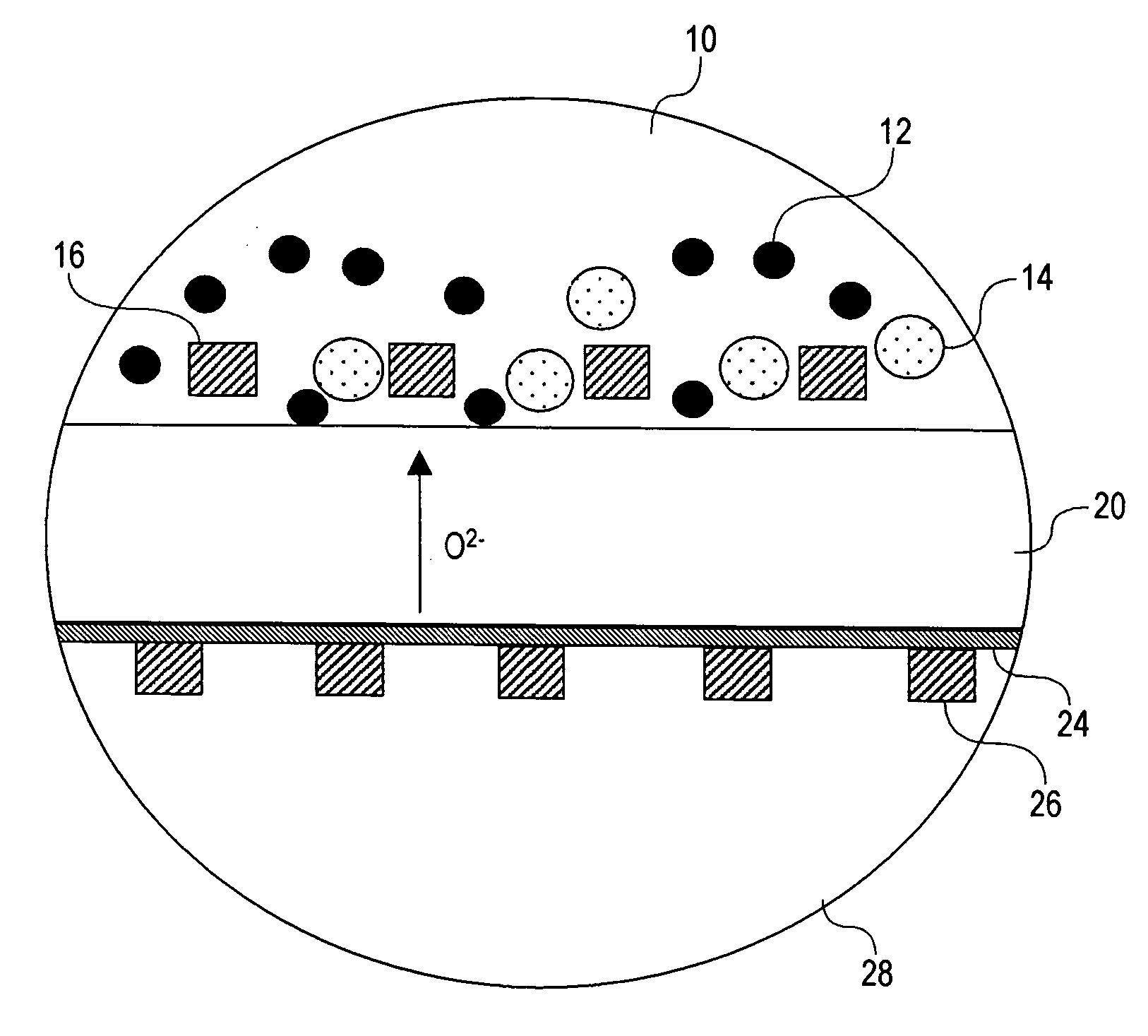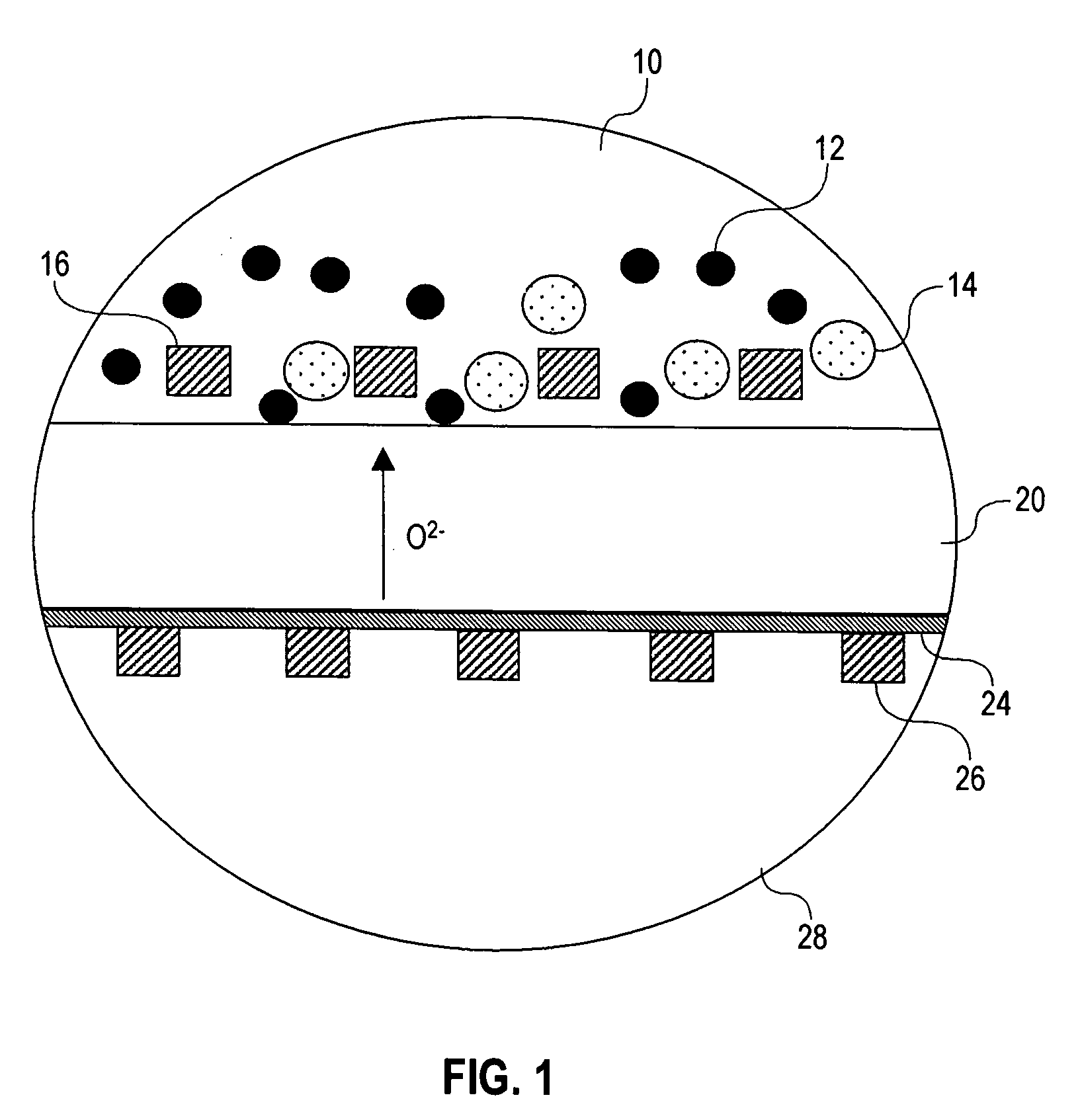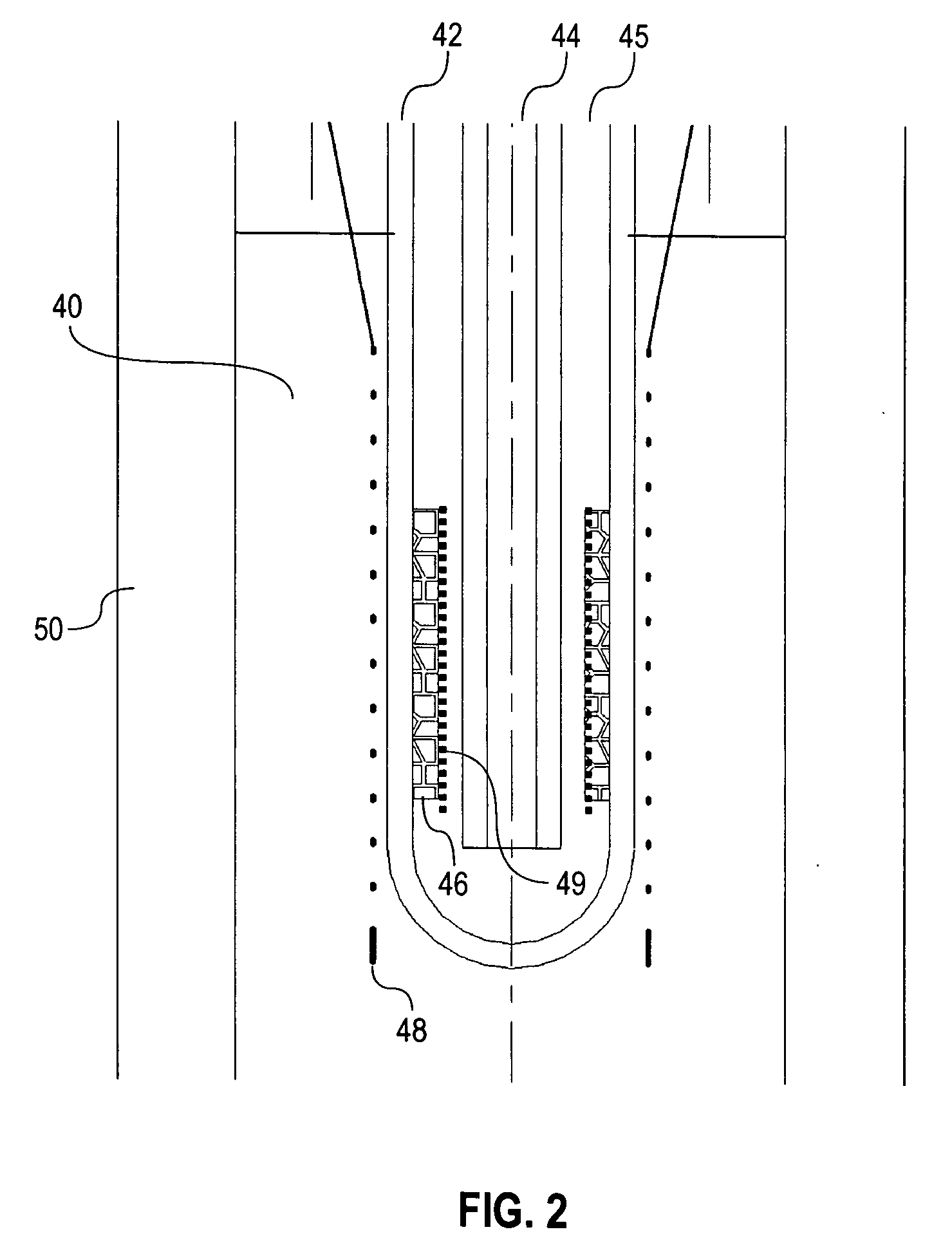Liquid anode electrochemical cell
a liquid anode and electrochemical cell technology, applied in the field of electrochemical cells, can solve the problems of limited capacity of all batteries, limited number of charge-discharge cycles of rechargeable batteries, irreversible consumption of electrochemical devices by batteries, etc., and achieve the effect of higher voltage and power
- Summary
- Abstract
- Description
- Claims
- Application Information
AI Technical Summary
Benefits of technology
Problems solved by technology
Method used
Image
Examples
Embodiment Construction
[0025] Before describing the present invention in detail, it is to be understood that this invention is not limited to specific fuels, materials, or device structures, as such may vary. It is also to be understood that the terminology used herein is for the purpose of describing particular embodiments only, and is not intended to be limiting.
[0026] It must be noted that, as used in this specification and the appended claims, the singular forms “a,”“an,” and “the” include both singular and plural referents unless the context clearly dictates otherwise. Thus, for example, reference to “an outlet” includes a plurality of outlets as well as a single outlet, reference to “an inlet” includes a plurality of inlets as well as single inlet, and the like.
[0027] The present invention introduces electrochemical devices for electrochemical energy conversion, which are believed to have two-phase reaction zones. A two-phase reaction zone for oxidation reactions is established by using a liquid a...
PUM
| Property | Measurement | Unit |
|---|---|---|
| melting temperature | aaaaa | aaaaa |
| melting temperature | aaaaa | aaaaa |
| thickness | aaaaa | aaaaa |
Abstract
Description
Claims
Application Information
 Login to View More
Login to View More - R&D
- Intellectual Property
- Life Sciences
- Materials
- Tech Scout
- Unparalleled Data Quality
- Higher Quality Content
- 60% Fewer Hallucinations
Browse by: Latest US Patents, China's latest patents, Technical Efficacy Thesaurus, Application Domain, Technology Topic, Popular Technical Reports.
© 2025 PatSnap. All rights reserved.Legal|Privacy policy|Modern Slavery Act Transparency Statement|Sitemap|About US| Contact US: help@patsnap.com



